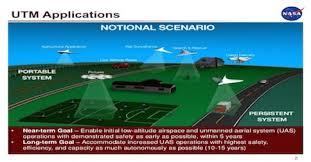
Breaking News
 Can My iPhone 17 Pro Match a 6K Cinema Camera? I Teamed Up With a Pro to Find Out
Can My iPhone 17 Pro Match a 6K Cinema Camera? I Teamed Up With a Pro to Find Out
 To Visit the US, Trump Now Demands Selfies and 5 Years of Social Media Data
To Visit the US, Trump Now Demands Selfies and 5 Years of Social Media Data
 Ted Cruz's Tucker Derangement Syndrome is Getting Worse - Here's Where It's Taking Him N
Ted Cruz's Tucker Derangement Syndrome is Getting Worse - Here's Where It's Taking Him N
 The Heinous Nature of Headlines and Propaganda as an Experiment in Psychological Manipulation
The Heinous Nature of Headlines and Propaganda as an Experiment in Psychological Manipulation
Top Tech News
 This tiny dev board is packed with features for ambitious makers
This tiny dev board is packed with features for ambitious makers
 Scientists Discover Gel to Regrow Tooth Enamel
Scientists Discover Gel to Regrow Tooth Enamel
 Vitamin C and Dandelion Root Killing Cancer Cells -- as Former CDC Director Calls for COVID-19...
Vitamin C and Dandelion Root Killing Cancer Cells -- as Former CDC Director Calls for COVID-19...
 Galactic Brain: US firm plans space-based data centers, power grid to challenge China
Galactic Brain: US firm plans space-based data centers, power grid to challenge China
 A microbial cleanup for glyphosate just earned a patent. Here's why that matters
A microbial cleanup for glyphosate just earned a patent. Here's why that matters
 Japan Breaks Internet Speed Record with 5 Million Times Faster Data Transfer
Japan Breaks Internet Speed Record with 5 Million Times Faster Data Transfer
 Advanced Propulsion Resources Part 1 of 2
Advanced Propulsion Resources Part 1 of 2
 PulsarFusion a forward-thinking UK aerospace company, is pushing the boundaries of space travel...
PulsarFusion a forward-thinking UK aerospace company, is pushing the boundaries of space travel...
 Dinky little laser box throws big-screen entertainment from inches away
Dinky little laser box throws big-screen entertainment from inches away
 'World's first' sodium-ion flashlight shines bright even at -40 ºF
'World's first' sodium-ion flashlight shines bright even at -40 ºF
NASA Is Making A Drone-Traffic Control System

We have no flight-tracking system for the lower sky. There are rules and charts for keeping track of larger aircraft that carry human passengers and are piloted by humans onboard, but drones are small and fly low, which means we have to trust in drone pilot good behavior to keep drones away from risky places, like airports. Small drones, unlike other aircraft, don't broadcast their location, so tracking them in the sky is tricky. That's why the FAA is working with NASA to come up with an Unmanned Aerial System Traffic Management system. Or, essentially, air traffic control for drones.
Earlier today, NASA tested the system at six different FAA test sites. Those test sites are quite the geographic spread: Fairbanks, Alaska; Grand Forks, North Dakota; Reno, Nevada; Rome, New York; Blacksburg, Virginia; Bushwood, Maryland; and Corpus Christi, Texas. NASA first tested the system at just one site last fall.



